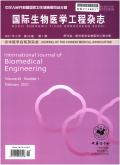Research progress in bone interface tissue engineering for ligament and tendon injury
引用次数: 0
Abstract
The interface of ligaments, tendons, and bones are susceptible to damage, often fail to heal themselves, and even cannot achieve a good prognosis after surgery. Interface tissue engineering is a comprehensive strategy to functionally connect soft and hard tissues to regenerate original anatomical functions and structures, thereby improving clinical efficacy. In this paper, the interface tissue engineering and composite tissue regeneration in soft tissue healing were systematically reviewed. The recent advances in interface engineering were summarized, based on the treatment of structural damage from two common soft tissue-bone connections (ligamentous bone connections, tendon bone connections), from the development of single tissue to composite tissue structures. The latest interface tissue engineering innovation structure design and potential clinical applications in recent years were reviewed. For future research, in-depth research on the mechanisms of interface development, regeneration, and internal environment balance, structure-function relationships, and biological processes that drive interface development, regeneration, and internal environment balance are still necessary. The innovative studies on interface tissue engineering have promoted the significance of the integration of tissue engineering and clinical, and the construction of complex tissues, so that it has broader significance for the future regeneration of total joints. Key words: Biomaterial; Tendon; Ligament; Tissue engineering; Soft and hard tissue repair韧带和肌腱损伤骨界面组织工程的研究进展
韧带、肌腱、骨骼的界面容易受到损伤,往往不能自愈,甚至术后不能达到良好的预后。界面组织工程是将软硬组织进行功能性连接,再生原有解剖功能和结构,从而提高临床疗效的综合策略。本文系统综述了界面组织工程和复合组织再生在软组织愈合中的应用。从两种常见的软组织-骨连接(韧带骨连接、肌腱骨连接)的结构损伤治疗,从单一组织结构发展到复合组织结构,综述了界面工程的最新进展。综述了近年来界面组织工程创新、结构设计及潜在的临床应用。今后的研究还需要深入研究界面发育、再生和内环境平衡的机制、结构-功能关系以及驱动界面发育、再生和内环境平衡的生物过程。界面组织工程的创新性研究,促进了组织工程与临床结合、复杂组织构建的重要意义,对未来全关节再生具有更广泛的意义。关键词:生物材料;肌腱;韧带;组织工程;软硬组织修复
本文章由计算机程序翻译,如有差异,请以英文原文为准。
求助全文
约1分钟内获得全文
求助全文

 求助内容:
求助内容: 应助结果提醒方式:
应助结果提醒方式:


